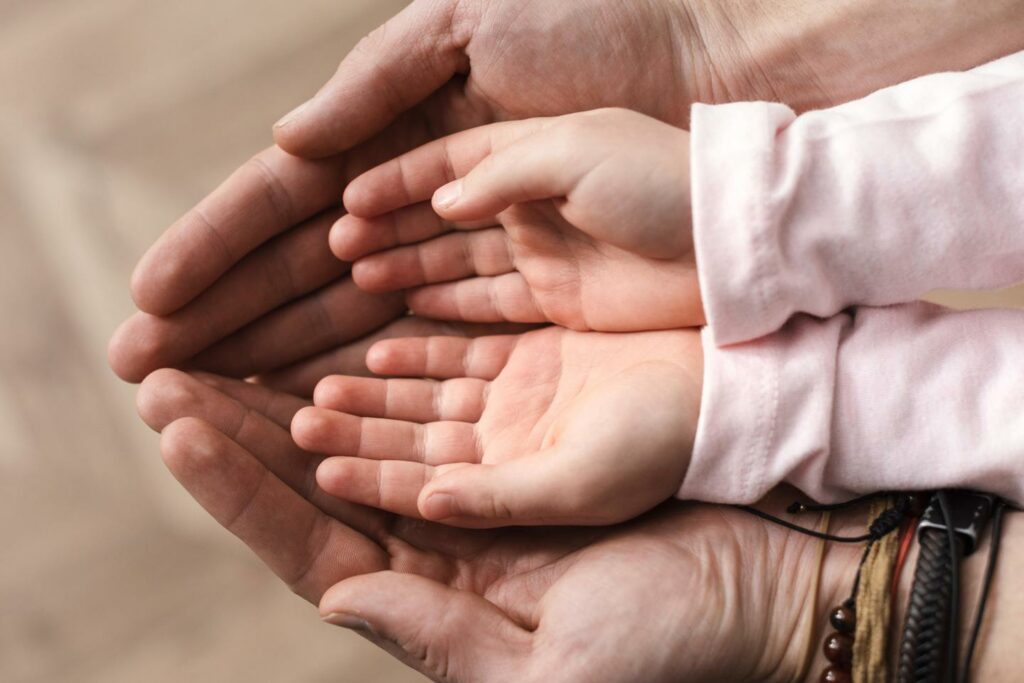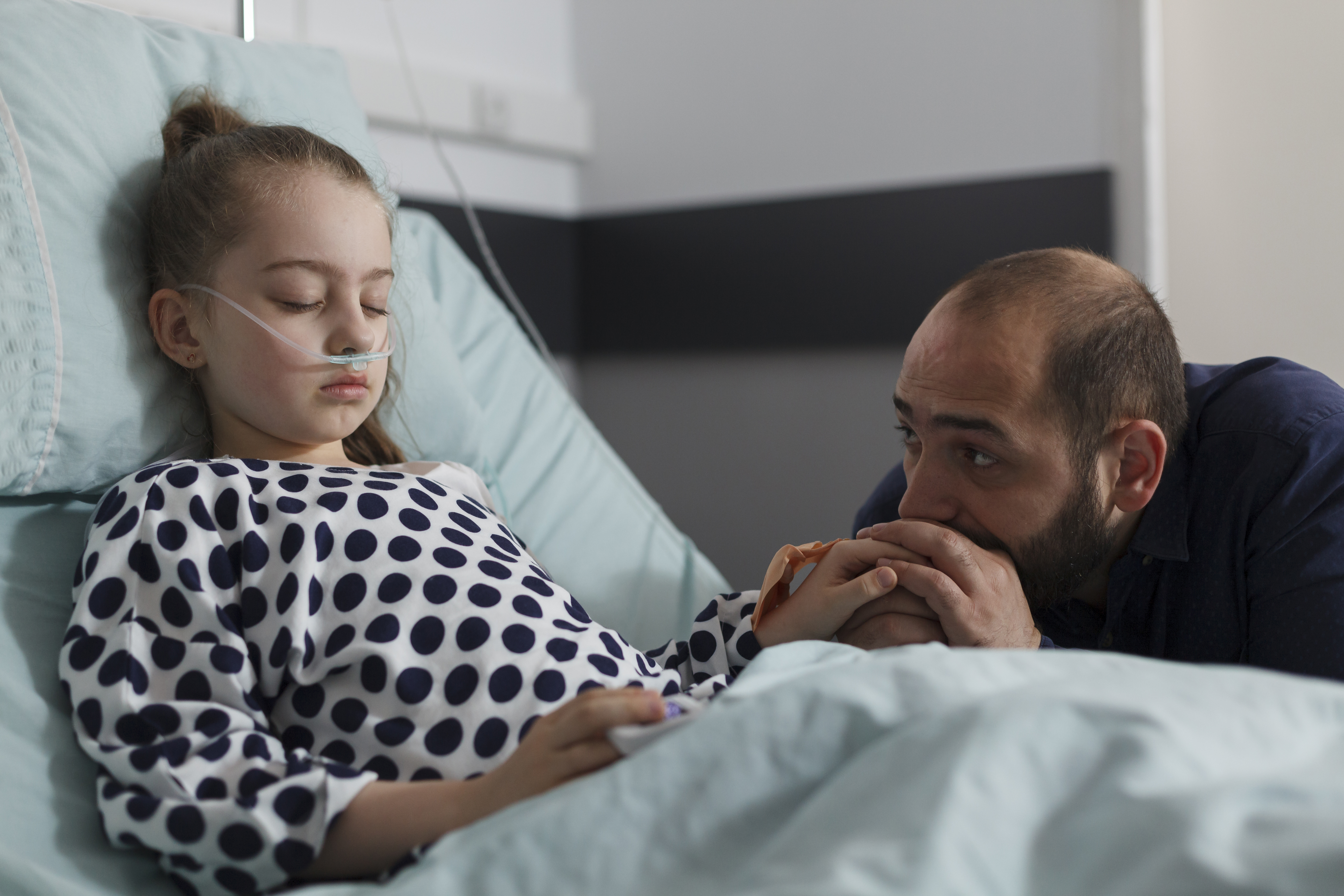
Get CPR training for your team!
If you have any questions feel free to email us at info@emccprtraining.com
CONTACT ONE OF OUR EXPERTS HERE

Last Updated on January 28, 2024 by CPR Training
CPR training for parents is a lifesaver, literally.
Imagine this… you’re at home and suddenly your child starts choking on a piece of food. Panic sets in…
You’ve heard about CPR but never really learned it. Now what?
The good news? With CPR training for parents, you can be prepared to handle such emergencies confidently.
Learning CPR is a critical skill set, particularly for parents. It equips them with lifesaving skills that can make all the difference in an emergency situation involving their child or infant.
Knowing how to perform CPR could be life-saving in situations where every second counts, such as sudden cardiac arrest or choking relief. According to the American Red Cross, immediate response during a cardiac arrest can significantly increase the chances of survival.
This gives parents crucial knowledge and instills confidence when it matters most – before professional help arrives, they must act swiftly.

Your ability to administer effective aid isn’t limited to your family members at home; it also extends into communities. Imagine being present in schools, playgrounds, or other places where children gather and play when an unfortunate event requires immediate attention.
Parents trained in CPR become invaluable assets capable of providing initial care until medical professionals arrive on the scene.
Learn lifesaving skills, respond effectively in emergencies, and keep your family safe.
The ability to perform CPR is a lifesaving skill, particularly for parents. Different CPR training courses exist to accommodate various requirements and inclinations.
The American Heart Association offers comprehensive courses in both adult and child CPR. These classes provide practical experience with a CPR training manikin under an AHA instructor’s guidance. They also provide specialized programs like Friends & Family which focus on how family members can effectively respond when another member is choking or requires resuscitation.
American Red Cross offers a variety of classes for individuals to choose from.
You might wonder if infant and child CPR should be taught separately due to differences in technique required for each age group. Many providers do separate these classes so learners can concentrate on specific techniques appropriate for infants versus older children.
To choose the right course, consider your unique circumstances such as availability, preferred learning method – onsite vs online -, and whether you need certification or not. Ensure any selected course includes adequate skills practice sessions along with theoretical understanding. Timely action during emergencies could save lives; therefore acquiring proper training shouldn’t be delayed.
Remember – knowledge gained from resources including online courses and videos helps prepare parents better for emergencies.

CPR, an abbreviation for cardiopulmonary resuscitation, is a life-saving procedure that every parent should be familiar with. It involves chest compressions and artificial ventilation to preserve brain function during emergencies like cardiac arrest or when breathing ceases.
Learning how to perform child CPR can mean the difference between life and death during emergencies.
To initiate this crucial process, you first check responsiveness by gently tapping the child’s shoulders while calling out their name. If there’s no response, call 911 immediately before commencing with chest compressions.
Many resources are available online offering infant CPR classes along with detailed guidelines on choking relief methods, both taught separately considering distinct requirements. These lifesaving skills practice includes step-by-step instructions accompanied oftentimes by videos demonstrating correct technique thus enabling learners to gain confidence over time.
In addition, onsite training offered via American Heart Association (AHA) instructor-lead programs also offers the opportunity to learn on manikins simulating real-life scenarios adding value immensely towards mastering these essential aid-training procedures.
Important Takeaway:
Don’t let panic take the wheel in emergencies; arm yourself with CPR knowledge. This life-saving skill, a blend of chest compressions and artificial ventilation, could be the difference between life and death for your child. Learn it from online resources or professional courses—your preparedness might save a precious life.
-min.jpg)
The craft of performing CPR on an infant may appear to be overwhelming, yet it is a fundamental aptitude that each parent should have available. The steps to master this lifesaving technique are straightforward and easily learned.
Unlike adult or child resuscitation techniques, the method used for infants is different due to their delicate structure. According to guidelines from the American Heart Association (AHA), two fingers rather than full hands are utilized when delivering chest compressions.
Maintaining open airways during rescue breaths also requires careful attention – tilting back an infant’s head slightly without going too far as over-tilting could obstruct breathing.
If you’re keen on further honing these skills, numerous online resources offer comprehensive training programs designed specifically for parents. Organizations like the American Heart Association (AHA) and others such as ARC provide invaluable tools tailored towards preparing yourself adequately against potential emergencies involving babies. From videos demonstrating correct techniques to courses including practice sessions under certified instructors’ guidance, these platforms serve as excellent starting points.

Emergencies are unpredictable, which is why parents need to be prepared. One approach to preparing for emergencies is learning about Automated External Defibrillators (AEDs) and related first-aid processes.
In essence, understanding how an AED works could save a family member’s life in case of an emergency.
The power of an AED, or simply an “AED,” lies within its simplicity for non-medical personnel use. This device scans the patient’s heart rhythm, delivering a shock if necessary.
Every minute counts when someone experiences sudden cardiac arrest; quick action paired with access to an AED could save lives.
CPR training often goes hand-in-hand with first aid education – they’re two sides of the same coin when it comes down to preparing for emergencies at home or elsewhere.
Lifesaving skills like wound care, burn treatment, managing fractures or sprains, and recognizing signs of serious health emergencies such as stroke or heart attack, should also be part of your knowledge base.
For instance, knowing how to perform CPR is critical in case a family member stops breathing while choking relief techniques taught separately can help save lives too before a professional arrives after calling 911. In most CPR classes, learning how to aid a child choking or infant choking victim is taught. These skills are essential to this all-too-common breathing emergency.
.jpg)
Learn lifesaving skills, respond effectively in emergencies, and keep your family safe.
Having a dependable AED at home is invaluable for providing the potential to save a loved one’s life in case of cardiac distress. It’s an essential tool that could save the life of a family member during cardiac emergencies.
Many trusted brands offer quality AED models designed with user-friendly features, suitable even for those without medical training. Noteworthy manufacturers include companies like Defibtech, known for their innovative and easy-to-use devices.
Purchasing your AED from a reputable vendor ensures you get comprehensive after-sales services such as installation, maintenance checks, replacement parts when necessary, and program management. EMC stands out in this regard by offering these extensive services and sales.
Differentiating between various models can be challenging due to the diverse features each one offers – some come equipped with voice prompts guiding users through CPR steps while others have visual aids like diagrams or LED screens. The key lies in selecting what suits your comfort level best.
Taking advantage of a CPR training program to maximize efficiency and safety when using an AED device at home is highly recommended. These often involve practical sessions where participants learn how to perform CPR using manikins under supervision from certified instructors affiliated with American Heart Association (AHA), American Red Cross (ARC), or Health & Safety Institute (HSI).
When considering cost factors associated with purchasing an effective model, remember not to compromise vital functionalities over price alone. This investment might seem significant now, but consider its potential impact – potentially saving lives.
Remember also that resources are readily available online, including courses and videos, which help users understand and optimize the utilization of these models. Making an informed decision involves assessing the upfront cost and understanding the long-term value and benefits of the right choice. Take advantage of these resources to ensure you get the most out of your investment and to ensure that safety and effectiveness remain at the forefront of your priorities.
Important Takeaway:
Equip yourself with CPR training and a reliable home AED to respond effectively in emergencies. Choose your device wisely, considering user-friendly features and after-sales services. Don’t skimp on cost over functionality – it’s an investment that could save lives.
Onsite training programs are an invaluable resource for empowering parents with lifesaving skills. These comprehensive courses provide hands-on experience in performing CPR, aiding choking relief, and operating automated external defibrillators (AEDs).
A deeper understanding of these critical procedures can significantly enhance a parent’s ability to respond swiftly and effectively during emergencies.
The Family & Friends CPR program offered by the American Heart Association (AHA) is tailored specifically for those who want to learn resuscitation techniques without seeking certification.
This course includes practical exercises using a manikin, offering participants firsthand experience performing adult, child, and infant CPR. Moreover, this AHA instructor-led class provides valuable insights about relieving adults’ or children’s choking hazards separately or with infant modules depending upon your family’s needs.
To learn more about these onsite training programs designed especially keeping parents in mind, contact EMC today.
Learn lifesaving skills, respond effectively in emergencies, and keep your family safe.
The capability of parents to react suitably in a crisis could mean the contrast between life and demise. With resources like online courses and video tutorials, they can acquire vital skills such as performing CPR or using Automated External Defibrillators (AEDs).
This is why it’s essential that family members have access to lifesaving education.
Organizations like the American Heart Association offer comprehensive training programs on their websites where parents can learn about infant CPR and child CPR, among other crucial first-aid techniques. These platforms provide detailed instructions through interactive simulations, which include skills practice sessions.
While these are invaluable tools for learning, remember that completing formal certification from recognized organizations ensures you’re equipped with accurate knowledge.
Videos serve as great visual aids when trying to understand complex procedures like performing CPR or operating an AED device. Numerous videos are available across various platforms demonstrating the correct technique under expert guidance.
However, caution must be exercised while referring to them – always cross-verify information with trusted sources before implementing anything learned from these videos.
If you’ve decided to have an AED at home – knowing how to manage its usage properly is equally important. Major brands selling AED devices often also offer program management services, ensuring your equipment stays ready to use whenever needed.
Please Note: In any medical emergency involving cardiac arrest or choking incidents, call 911 immediately before attempting rescue measures yourself.
Equipping oneself with this knowledge isn’t just about protecting one’s children; it equips individuals with potential lifesaving abilities should anyone need help.
Important Takeaway:
Parents, don’t wait for emergencies to strike. Equip yourself with lifesaving CPR skills and knowledge on using AEDs. Take advantage of online courses, video tutorials, and digital platforms – they’re your ticket to becoming a reliable first responder in times of crisis.
CPR training equips parents with vital skills to respond effectively in emergencies, potentially saving their child’s life.
The five steps include: checking responsiveness, calling 911, starting chest compressions, providing rescue breaths, and repeating until help arrives.
Child CPR applies to children aged one year up through puberty. Infants under a year require specific infant CPR techniques.
No, pediatric and infant CPR differ. Pediatric refers to children from age one through puberty while infants are those under a year old.
It equips you with the ability to respond effectively in emergencies.
You’ve learned about different types of CPR training available from reputable organizations like AHA, ARC, and HSI.
The techniques for CPR on children and infants are now part of your knowledge base.
AEDs and first aid procedures no longer seem foreign or intimidating.
You even know where to find quality AEDs for home use and have discovered onsite training programs designed specifically for parents.
All these tools you have acquired make you ready to handle any unforeseen crisis that may arise.
Check out our other blogs at https://www.emccprtraining.com/blog/.
Contact us at www.emccprtraining.com/contact or 800-695-5655 to learn about our onsite CPR/AED training and AED sales.
Get CPR training for your team!
If you have any questions feel free to email us at info@emccprtraining.com
CONTACT ONE OF OUR EXPERTS HERE